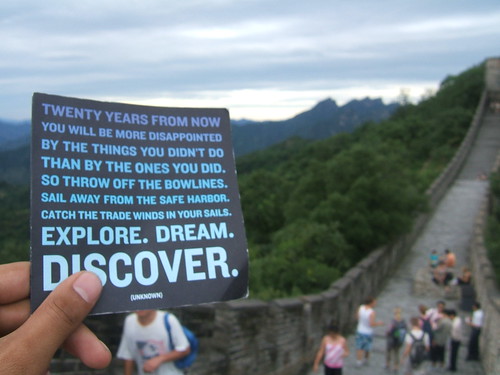The wall is the place most people choose on their own. You come for a day or a week and it's never to see the sights. The sights are immaterial, and not unexpected. Temples, tea houses with dripping peremera trees hanging soot and sleek flowers over damp pollenated tables. Once thriving book shops and market warrens closed down by the proper authorities. Cab drivers who direct you round about ways and never give useful directions. None of these things are unusual, or particularly memorable. It is instead, the wall itself, that calls to you. The wall is the reason you have come. The cabs that are able to arrive let you off in its shadow, there at the barricade that was once called a gate, and it is so high you can no longer see a sun, if a sun would ever be visible in this overcast, denuded sky. The wall is so high, and the gate itself so impregnable, so that it must be called barricade, or blockage, is so overbuild that it is the redundancy of the thing that impresses you first. Who would go to such trouble, in a country were resources are infamously scarce and public will hopelessly addled. Who could hope to climb it, slick black walled as of a piece, with no cobble of mortar or chink, such that the spikes at the top, brutal lipped and waiting were deemed required. Who would help to ram a gate with enough force, in a place were all motor vehicles were decades ago disabled, to dent or damage. And who build the wall to begin with, and why, and against what -- which that leads to the next question -- when then lies on the other side. The guide books can offer no answers, or even direction. They describe the getting to the wall, but still leave one up to the vagaries of the cab operators, who run on foot pulling the conveyance behind, and are of consequence slow and also -- by nature - certainly insane. The guide books describe the very blackness and sleekne
Scribbler
(joined
almost 11 years
ago)
Story information
License
Creative Commons Attribution 3.0
